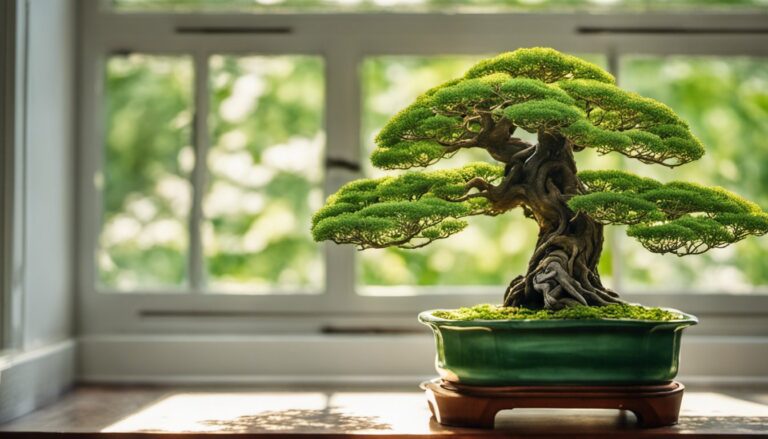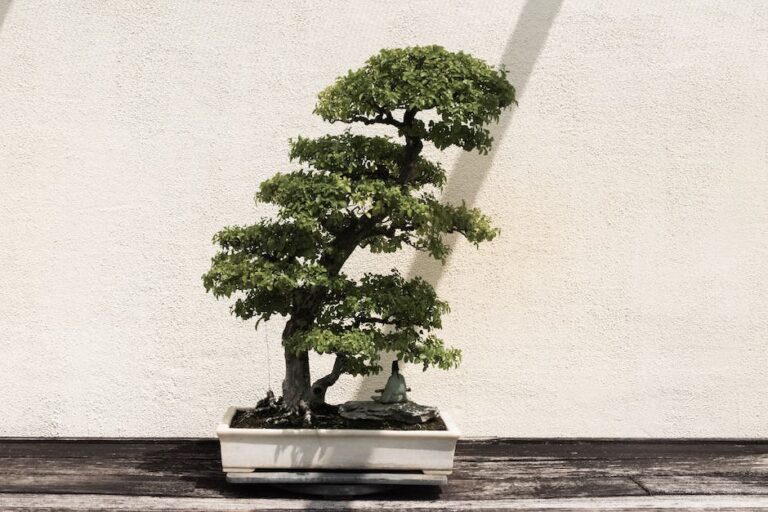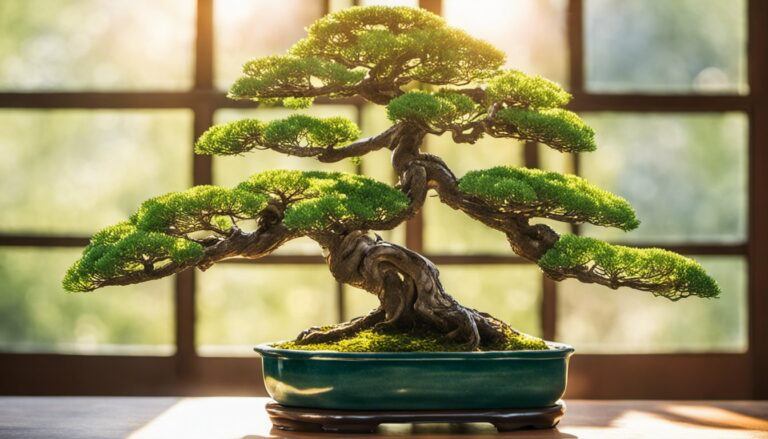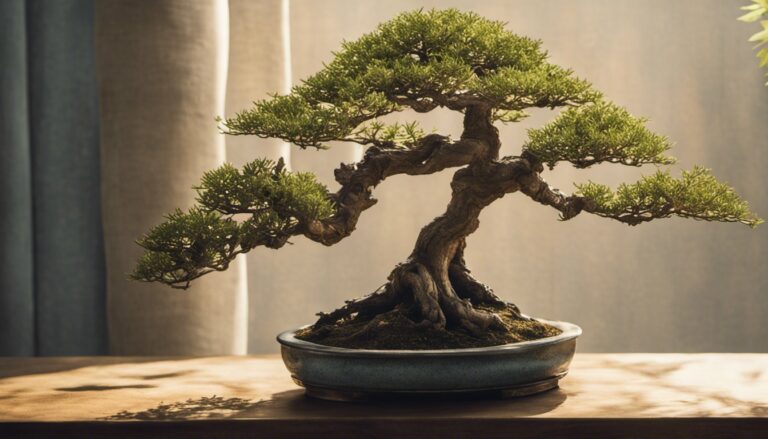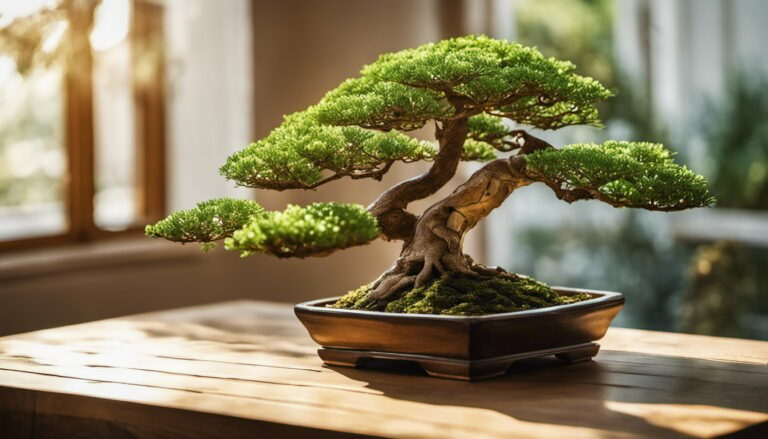What To Trim On A Bonsai Tree
Did you know that trimming your bonsai tree can help it thrive and maintain its beautiful shape?
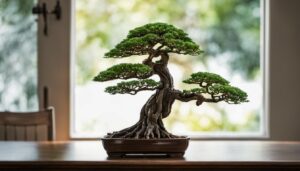 In fact, by carefully pruning branches, leaves, roots, foliage, and shoots, you can enhance the overall health and appearance of your bonsai.
In fact, by carefully pruning branches, leaves, roots, foliage, and shoots, you can enhance the overall health and appearance of your bonsai.
This article will guide you through the essential steps of trimming a bonsai tree, providing you with expert knowledge and precise instructions.
Get ready to transform your bonsai into a work of art with these detail-oriented trimming techniques.
Key Takeaways
- Trim branches growing in the wrong direction or are too long
- Regularly check and maintain root health for overall well-being
- Remove yellow or discolored leaves to promote healthy foliage growth
- Pinch off tips of new shoots to encourage branching and denser foliage
Branches
You’ll want to trim any branches that are growing in the wrong direction or are too long. Pruning techniques play a crucial role in maintaining the aesthetic appeal and overall health of your bonsai tree.
When it comes to branch placement and structure, there are a few key considerations to keep in mind. Firstly, assess the direction in which the branches are growing. Ideally, they should radiate in a balanced and harmonious manner, creating a sense of natural beauty. Trim any branches that are crossing or crowding others, as this can hinder proper development.
Additionally, be mindful of the length of the branches. Long branches can disrupt the overall balance of the tree and may need to be pruned back to maintain a visually pleasing silhouette.
Leaves
To maintain the health and aesthetic appeal of your bonsai, it’s important to regularly remove any excess foliage. Pruning techniques for leaves can vary depending on the type of bonsai you have, but here are some general tips to keep in mind:
- Pinching: Gently pinch off the tips of the leaves to encourage new growth and maintain the desired shape of your bonsai.
- Thinning: Remove crowded or overlapping leaves to improve air circulation and prevent disease.
- Leaf trimming: Trim larger leaves to maintain the bonsai’s proportion and balance.
- Leaf maintenance: Regularly inspect your bonsai for any yellow or damaged leaves and remove them promptly to prevent further damage.
Roots
Regularly checking and maintaining the health of your bonsai’s roots is crucial for its overall well-being. The roots are the foundation of your bonsai tree, providing it with the necessary nutrients and water it needs to thrive.
To ensure root health, it is important to prune them properly. Start by gently removing any dead or damaged roots using sharp pruning shears. This will prevent any potential diseases from spreading. Additionally, it is essential to prune the roots to maintain the tree’s size and shape. Carefully trim the longer roots to encourage new growth and maintain a balanced root system.
Be sure to use clean tools and disinfect them between cuts to prevent the spread of any pathogens. By regularly checking and pruning your bonsai’s roots, you will ensure its continued health and vitality.
Foliage
The health and appearance of your bonsai’s foliage can be improved by regularly misting it to increase humidity levels. This simple practice helps to prevent the leaves from drying out and promotes healthy growth.
In addition to misting, there are several other techniques you can use to maintain the foliage of your bonsai tree:
- Pruning: Regularly trim back any overgrown or damaged branches to maintain a balanced and aesthetically pleasing shape.
- Leaf pruning: Remove any yellow or discolored leaves to promote the growth of new healthy foliage.
- Pinching: Gently pinch off the tips of new shoots to encourage branching and denser foliage.
- Defoliation: In some cases, carefully removing all the leaves can stimulate new growth and improve the overall appearance of the tree.
Shoots
When caring for your bonsai, it’s important to gently pinch off the tips of new shoots to encourage branching and denser foliage. Shoot pruning techniques play a crucial role in maintaining the health and beauty of your bonsai tree. By removing the terminal bud, you stimulate the growth of lateral buds, resulting in a more compact and bushy appearance. Shoot thinning is especially important in bonsai tree maintenance as it helps to prevent overcrowding and allows for better airflow and light penetration. This promotes a balanced growth and reduces the risk of diseases. Regular shoot pruning also enables you to shape your bonsai according to your desired style. Refer to the table below for a summary of shoot pruning techniques and their benefits.
| Pruning Technique | Benefits |
|---|---|
| Pinching | Encourages branching |
| Removal of terminal bud | Promotes denser foliage |
| Thinning | Prevents overcrowding |
| Shaping | Allows for desired style |
Conclusion
In conclusion, when it comes to trimming a bonsai tree, it’s crucial to focus on three key areas: branches, leaves, and roots.
By carefully pruning these elements, you can shape and maintain the aesthetic beauty of your bonsai.
Additionally, paying attention to the foliage and shoots will ensure healthy growth and vibrant colors.
Remember, precision and attention to detail are essential in this art form.
So go ahead, trim with confidence, and watch your bonsai thrive with grace and elegance.


